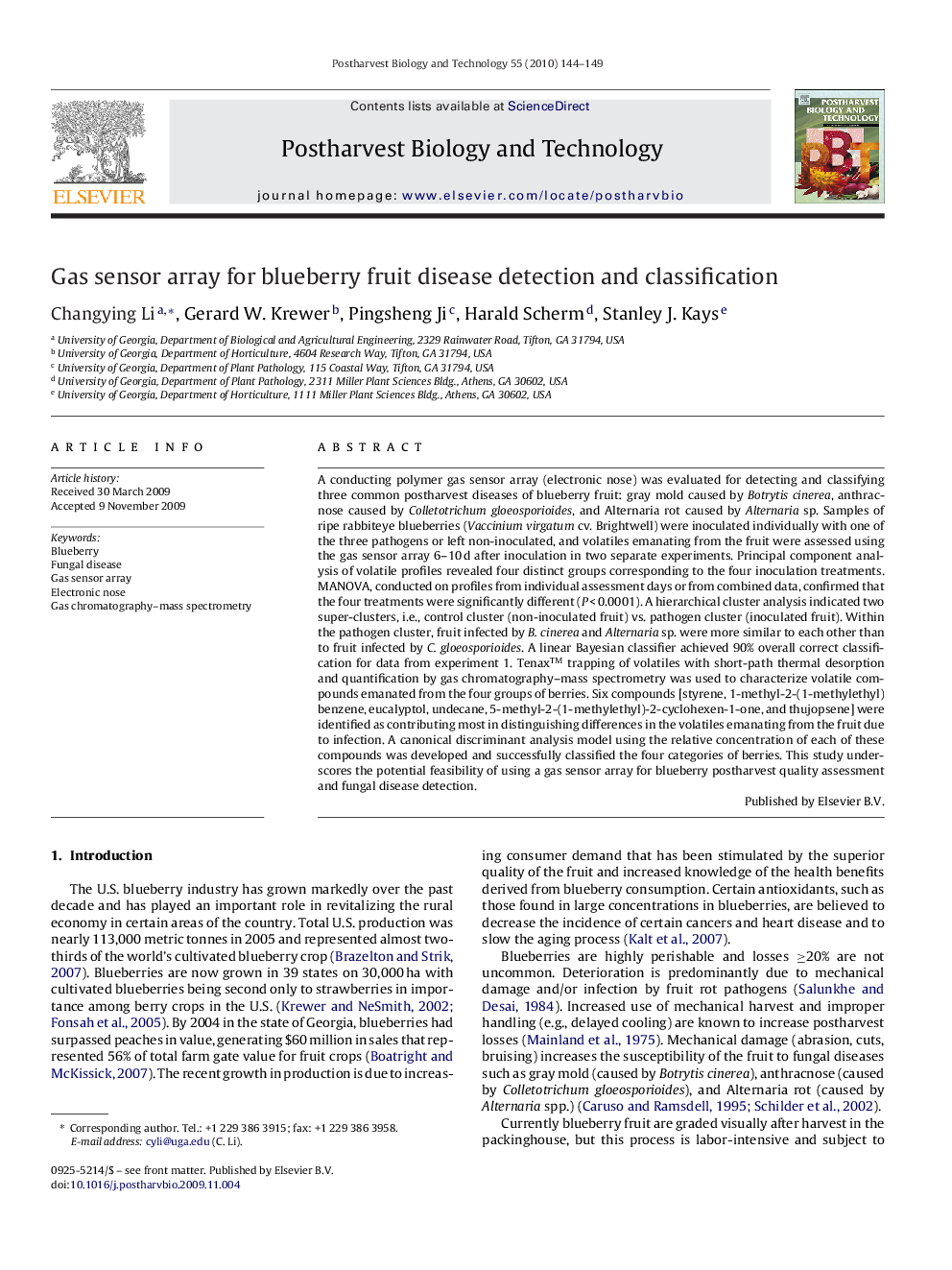| Article ID | Journal | Published Year | Pages | File Type |
|---|---|---|---|---|
| 4519297 | Postharvest Biology and Technology | 2010 | 6 Pages |
A conducting polymer gas sensor array (electronic nose) was evaluated for detecting and classifying three common postharvest diseases of blueberry fruit: gray mold caused by Botrytis cinerea, anthracnose caused by Colletotrichum gloeosporioides, and Alternaria rot caused by Alternaria sp. Samples of ripe rabbiteye blueberries (Vaccinium virgatum cv. Brightwell) were inoculated individually with one of the three pathogens or left non-inoculated, and volatiles emanating from the fruit were assessed using the gas sensor array 6–10 d after inoculation in two separate experiments. Principal component analysis of volatile profiles revealed four distinct groups corresponding to the four inoculation treatments. MANOVA, conducted on profiles from individual assessment days or from combined data, confirmed that the four treatments were significantly different (P < 0.0001). A hierarchical cluster analysis indicated two super-clusters, i.e., control cluster (non-inoculated fruit) vs. pathogen cluster (inoculated fruit). Within the pathogen cluster, fruit infected by B. cinerea and Alternaria sp. were more similar to each other than to fruit infected by C. gloeosporioides. A linear Bayesian classifier achieved 90% overall correct classification for data from experiment 1. Tenax™ trapping of volatiles with short-path thermal desorption and quantification by gas chromatography–mass spectrometry was used to characterize volatile compounds emanated from the four groups of berries. Six compounds [styrene, 1-methyl-2-(1-methylethyl) benzene, eucalyptol, undecane, 5-methyl-2-(1-methylethyl)-2-cyclohexen-1-one, and thujopsene] were identified as contributing most in distinguishing differences in the volatiles emanating from the fruit due to infection. A canonical discriminant analysis model using the relative concentration of each of these compounds was developed and successfully classified the four categories of berries. This study underscores the potential feasibility of using a gas sensor array for blueberry postharvest quality assessment and fungal disease detection.
